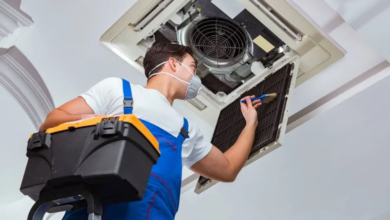How to Check for Bed Bugs in Your Home: A Step-by-Step Guide

Bed bugs are tiny, blood-sucking pests that can turn your home into a nightmare. These insects hide in mattresses, furniture, and even electrical outlets, making them difficult to detect. If left unchecked, a small infestation can quickly grow into a major problem.
Knowing how to check for bed bugs is crucial for early detection and effective treatment. In this guide, we’ll walk you through a step-by-step process to inspect your home for bed bugs, identify signs of an infestation, and take action before it spreads.
Why It’s Important to Check for Bed Bugs
Bed bugs are excellent hitchhikers, often entering homes through luggage, used furniture, or clothing. They feed on human blood, causing itchy bites and potential allergic reactions. Unlike other pests, bed bugs do not transmit diseases, but their presence can lead to stress, insomnia, and discomfort.
Early detection is key because bed bugs ( væggelus ) reproduce rapidly. A single female can lay hundreds of eggs, making infestations harder to eliminate over time. By regularly inspecting your home, you can catch an infestation early and save yourself from costly extermination treatments.
Signs of a Bed Bug Infestation
Before diving into the inspection process, it’s important to recognize the common signs of bed bugs:
- Bite Marks – Small, red, itchy welts in clusters or lines (often on arms, legs, or back).
- Blood Stains – Tiny rust-colored spots on sheets or pillowcases from crushed bugs.
- Dark Spots (Fecal Matter) – Small black or brown dots on mattresses, furniture, or walls.
- Shed Skins – Translucent exoskeletons left behind as bed bugs grow.
- Musty Odor – A sweet, musty smell in severe infestations.
- Live Bed Bugs – Small, reddish-brown insects (about the size of an apple seed).
Now, let’s move on to the step-by-step inspection process.
See also: Picking the Right Pram Manufacturer for Your Startup Brand
Step 1: Gather Your Inspection Tools
Before you begin, gather the following tools to help with your search:
- Flashlight – Bed bugs hide in dark crevices, so a bright light is essential.
- Magnifying Glass – Helps spot tiny eggs or nymphs.
- Credit Card or Thin Tool – Useful for scraping along seams and cracks.
- Gloves – Optional, but helpful for hygiene.
- White Paper or Tape – To collect samples if needed.
Step 2: Inspect the Bed and Mattress
Since bed bugs are commonly found near sleeping areas, start with the bed:
- Strip the Bedding – Remove all sheets, pillowcases, and mattress covers.
- Check Seams and Tufts – Use your flashlight to examine the mattress seams, piping, and tags where bed bugs often hide.
- Look for Stains and Eggs – Search for blood spots, dark fecal marks, or tiny white eggs (about 1mm long).
- Inspect the Box Spring – Lift the mattress and check the box spring, especially the folds and underside.
- Examine the Bed Frame – Look in cracks, joints, and screw holes where bed bugs may hide. For more read https://vaeggelus-fri.dk/ .
Step 3: Check Furniture Near the Bed
Bed bugs don’t just stay in beds—they spread to nearby furniture:
- Nightstands & Dressers – Open drawers and inspect corners, seams, and underneath.
- Couches & Chairs – Check seams, cushions, and between upholstery folds.
- Luggage & Bags – If you’ve recently traveled, inspect suitcases and backpacks.
Step 4: Search Other Common Hiding Spots
Bed bugs can hide in unexpected places, so expand your search:
- Baseboards & Carpets – Look along edges where walls meet the floor.
- Electrical Outlets & Switches – Remove cover plates carefully and check inside.
- Curtains & Wall Hangings – Examine folds and hems.
- Closets & Clothing – Check pockets, seams, and stored items.
Step 5: Use Detection Methods for Confirmation
If you’re unsure whether you have bed bugs, try these additional methods:
- Bed Bug Interceptors – Place traps under bed legs to catch bugs.
- Double-Sided Tape – Apply tape to edges of furniture to trap crawling bugs.
- Professional Inspection – If you suspect an infestation but can’t find proof, consider hiring an exterminator.
What to Do If You Find Bed Bugs
If you discover bed bugs, take immediate action:
- Isolate Infested Items – Seal infested bedding, clothes, or furniture in plastic bags.
- Wash & Heat-Treat Fabrics – Wash items in hot water (at least 120°F) and dry on high heat.
- Vacuum Thoroughly – Use a vacuum with a HEPA filter to remove bugs and eggs.
- Use Bed Bug Sprays or Powders – Apply EPA-approved insecticides to affected areas.
- Call a Professional Exterminator – For severe infestations, professional treatment may be necessary.
Preventing Future Bed Bug Infestations
To keep bed bugs from returning:
- Inspect Secondhand Furniture – Always check before bringing used items home.
- Use Mattress Encasements – Protective covers prevent bed bugs from entering or escaping.
- Reduce Clutter – Fewer hiding spots make inspections easier.
- Be Cautious When Traveling – Keep luggage off hotel beds and inspect rooms before unpacking.
Final Thoughts
Bed bugs are sneaky pests, but with regular inspections, you can catch them early and prevent a full-blown infestation. By following this step-by-step guide, you’ll be better equipped to identify, treat, and prevent bed bugs in your home.





